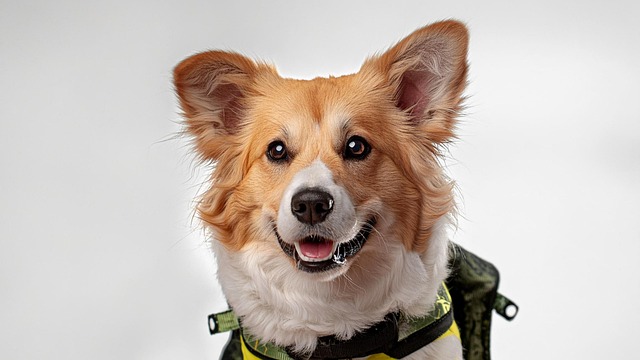In the field of dog training, there is a "5-second rule" that has attracted much attention and is very practical. It seems simple, but it contains training wisdom that blends science and emotion. This rule is not only an effective tool for adjusting dog behavior, but also an important rule for building a bridge of trust between people and dogs. Next, let's explore the mystery of the "5-second rule" in dog training.
The core of the "5-second rule" is that when a dog exhibits expected or unexpected behavior, the owner's time window for feedback should be controlled within 5 seconds. Behind this rule, there is a solid support from the principles of animal behavior. Dogs have different cognitive patterns from humans, and their memory is short-term and context-related. In a very short time after the behavior occurs, dogs can clearly connect their behavior with external feedback. If the feedback delay exceeds 5 seconds, the dog's attention may have been diverted, and it cannot accurately understand the owner's intentions, and may even be confused about the wrong behavior. For example, when a dog urinates and defecates anywhere in the room, and the owner discovers and reprimands it a few minutes later, the dog may mistakenly associate the owner's anger with a certain behavior at the moment, such as approaching the owner or chewing toys. Not only can the wrong behavior not be corrected, but it may also cause psychological pressure on the dog and destroy the trust relationship between each other.
 From the perspective of positive emotions, the "5-second rule" is the golden rule for strengthening positive behaviors. Dogs are naturally eager to gain recognition and rewards from their owners. When they do the right thing, such as sitting down quickly after hearing the command and waiting for food quietly, the owner promptly gives praise, caressing or snack rewards within 5 seconds, which can make the dog clearly perceive that this behavior will bring pleasant results. This timely and clear positive feedback is like pressing the "confirmation button" in the dog's brain, making them more willing to repeat these behaviors. Over time, the dog will gradually form a conditioned reflex and actively show the good behavior expected by the owner. Every timely reward is an expression of the owner's love for the dog, and it is also a process of deepening the emotional bond between each other, allowing the dog to feel warmth and security during training.
From the perspective of positive emotions, the "5-second rule" is the golden rule for strengthening positive behaviors. Dogs are naturally eager to gain recognition and rewards from their owners. When they do the right thing, such as sitting down quickly after hearing the command and waiting for food quietly, the owner promptly gives praise, caressing or snack rewards within 5 seconds, which can make the dog clearly perceive that this behavior will bring pleasant results. This timely and clear positive feedback is like pressing the "confirmation button" in the dog's brain, making them more willing to repeat these behaviors. Over time, the dog will gradually form a conditioned reflex and actively show the good behavior expected by the owner. Every timely reward is an expression of the owner's love for the dog, and it is also a process of deepening the emotional bond between each other, allowing the dog to feel warmth and security during training.
The "5-second rule" also plays a key role in dealing with bad dog behavior. When a dog engages in inappropriate behavior such as biting furniture or jumping on people, the owner needs to take appropriate corrective measures within 5 seconds. The correction here is not a severe punishment, but a gentle and firm way to let the dog know that such behavior is not allowed. For example, when a dog jumps on a person, the owner can immediately block it with his body, while issuing a firm "no" command, and then stop interacting with the dog to let it calm down. In this short 5 seconds, the owner conveys a clear attitude, and the dog can quickly realize his mistake. If you miss these 5 seconds, the dog's behavior may have continued to escalate, and the difficulty of correction will be greatly increased. Through timely and appropriate corrections, the owner helps the dog establish behavioral norms and guides them to grow into a well-behaved and popular family member.
The application of the "5-second rule" also requires the owner to have keen observation and quick response. In daily life, the owner should always pay attention to the dog's behavior dynamics and not miss any moment that can be strengthened or corrected. This requires the owner to devote himself to getting along with the dog and understand the dog's behavioral habits and subtle signs before the behavior. For example, when a dog starts sniffing the ground and circling indoors, it may be a signal that it wants to defecate. If the owner can detect it in time and guide it to the designated place, and give rewards immediately after the dog defecates correctly, the dog can be effectively trained to defecate at a fixed point. Every successful use of the "5-second rule" is an improvement in the tacit understanding between the owner and the dog, and a testimony to the continuous consolidation of mutual trust.
In the long-term training process, the "5-second rule" is like an invisible bond that closely connects the owner's love and expectations, scientific training methods, and the dog's learning ability. It makes training no longer a boring repetition, but an emotional exchange full of warmth and interaction. When the owner follows the "5-second rule" and guides the dog with patience and love, the dog will also repay the owner with loyalty and progress. Whether it is a simple obedience command or a complex skill learning, the "5-second rule" plays an irreplaceable role in it, helping the dog grow into a better self, and also allowing the owner to gain happiness and satisfaction with the company of the dog.

 From the perspective of positive emotions, the "5-second rule" is the golden rule for strengthening positive behaviors. Dogs are naturally eager to gain recognition and rewards from their owners. When they do the right thing, such as sitting down quickly after hearing the command and waiting for food quietly, the owner promptly gives praise, caressing or snack rewards within 5 seconds, which can make the dog clearly perceive that this behavior will bring pleasant results. This timely and clear positive feedback is like pressing the "confirmation button" in the dog's brain, making them more willing to repeat these behaviors. Over time, the dog will gradually form a conditioned reflex and actively show the good behavior expected by the owner. Every timely reward is an expression of the owner's love for the dog, and it is also a process of deepening the emotional bond between each other, allowing the dog to feel warmth and security during training.
From the perspective of positive emotions, the "5-second rule" is the golden rule for strengthening positive behaviors. Dogs are naturally eager to gain recognition and rewards from their owners. When they do the right thing, such as sitting down quickly after hearing the command and waiting for food quietly, the owner promptly gives praise, caressing or snack rewards within 5 seconds, which can make the dog clearly perceive that this behavior will bring pleasant results. This timely and clear positive feedback is like pressing the "confirmation button" in the dog's brain, making them more willing to repeat these behaviors. Over time, the dog will gradually form a conditioned reflex and actively show the good behavior expected by the owner. Every timely reward is an expression of the owner's love for the dog, and it is also a process of deepening the emotional bond between each other, allowing the dog to feel warmth and security during training.



